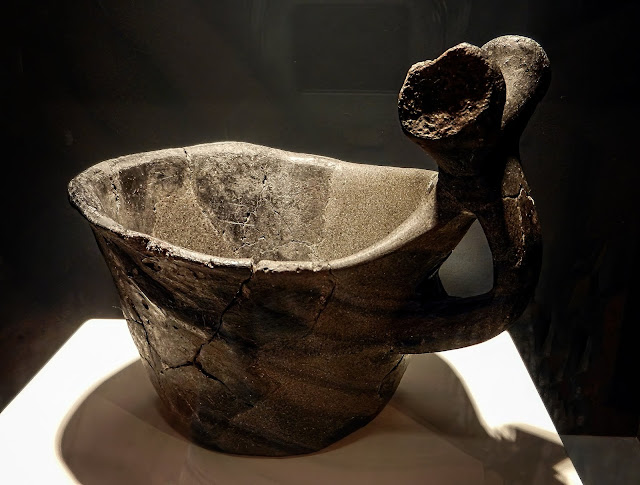Museo delle Palafitte of Fiavé, Italy.
Museo delle Palafitte of Fiavé, Italy.
On the shores of Lake Carera, of glacial origin, and a nearby peat bog, man has lived at least since the Mesolithic Period (7th millennium BCE) to the end of the Bronze Age. Between the fourth and second millennium BCE, there were villages of pile-dwellings, still visible today in the nearby archaeological area of the Fiavé bog. In the museum there is a selection of the extraordinary objects found by archaeologists including ceramic tableware, bronze and - very rare at the time - Baltic amber and gold jewelry. The objects in wood are exceptional, too, and are among the oldest in the world, having been preserved for 3800-3400 years: cups, ladles, whisks, trays, buckets, bats, sickles, drills, ax handles. Food remains that the people cultivated and harvested are also displayed. Guided tours of the museum and archaeological site are available.
Image: A mug recovered at the archaeological site near Fiavé, Italy. Image courtesy of Wikimedia Commons contributor Dega180.
On the shores of Lake Carera, of glacial origin, and a nearby peat bog, man has lived at least since the Mesolithic Period (7th millennium BCE) to the end of the Bronze Age. Between the fourth and second millennium BCE, there were villages of pile-dwellings, still visible today in the nearby archaeological area of the Fiavé bog. In the museum there is a selection of the extraordinary objects found by archaeologists including ceramic tableware, bronze and - very rare at the time - Baltic amber and gold jewelry. The objects in wood are exceptional, too, and are among the oldest in the world, having been preserved for 3800-3400 years: cups, ladles, whisks, trays, buckets, bats, sickles, drills, ax handles. Food remains that the people cultivated and harvested are also displayed. Guided tours of the museum and archaeological site are available.
Image: A mug recovered at the archaeological site near Fiavé, Italy. Image courtesy of Wikimedia Commons contributor Dega180.




Comments
Post a Comment